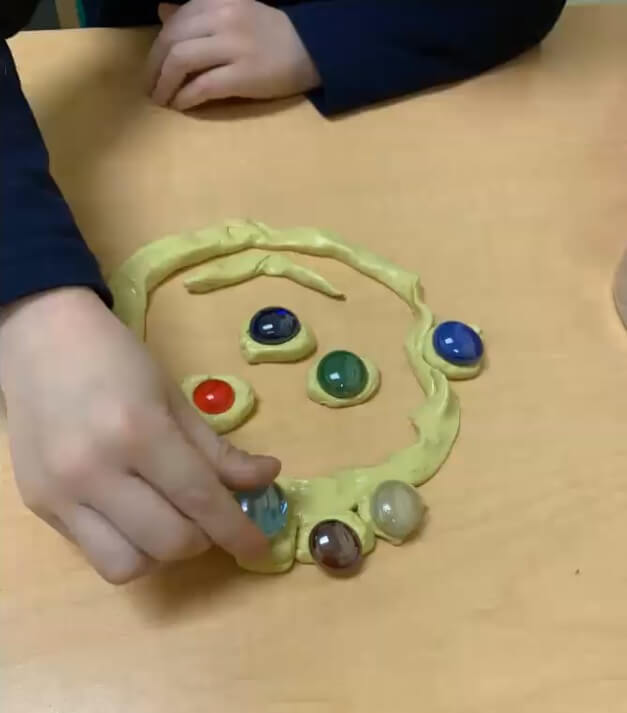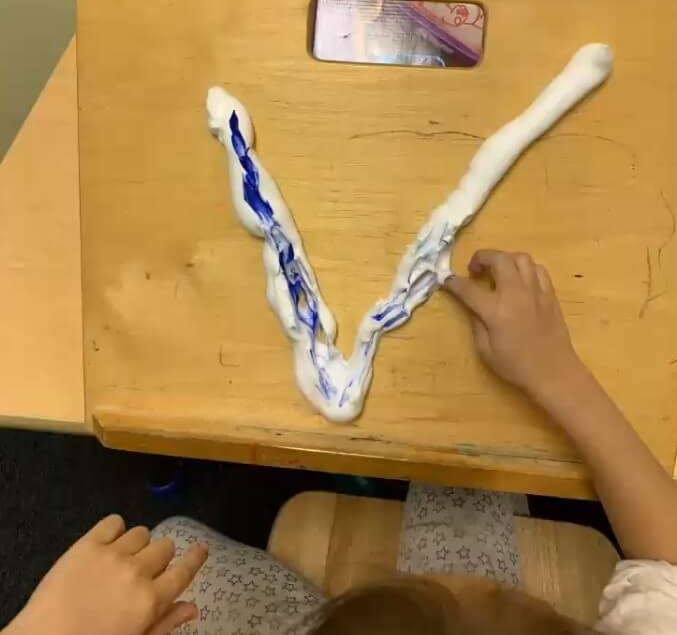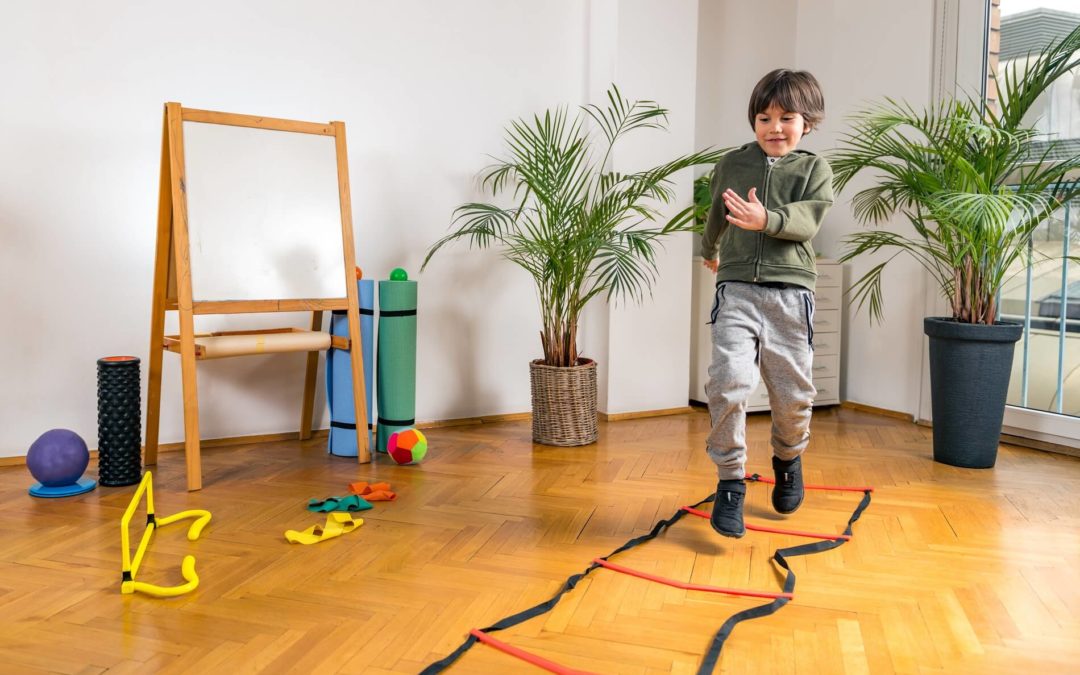How has the pandemic impacted our children? What is better? What is worse? Occupational Therapist Robbie Levy wondered how to enrich the lives of the families she works with. At the NYC 2021 DIR Conference in March, she presented, “Enriching Sensory and Motor Experiences During COVID to Enhance Relationships and Strengthen Capacities” which gave me a different insight into the challenges brought about in the last year. She then went through each sensory system and gave wonderful suggestions for activities we can do at home. I’m delighted to present part 2 of this two-part podcast today!
Robbie is celebrating 40 years this summer being a pediatric O.T. She is the Executive Director and Founder of Dynamic Kids NY, a multi-disciplinary pediatric practice that provides Occupational, Physical, and Speech Therapy services to children from birth through teens. They also provide enrichment groups such as music, art, yoga, self-regulation and handwriting. Robbie is very sensory- and pediatric-oriented and also just started a new company with another O.T. and an interior designer called Sensarooms which is a sensory-informed interior design company.
Enriching Sensory and Motor Experiences at Home
Sensarooms: Sensory-informed interior design
We all live more sensory lives than we realize, Robbie starts with. Many of the activities and hobbies we gravitate towards are influenced by our sensory systems and our neurology, she explains. If you have a hyperactive vestibular system, you’re probably not going to jump out of a plane. She loves to plant flowers. She’s a very proprioceptive, tactile person who could live in a sensory bin if you let her, she laughs. Her hobbies are related to those kinds of sensations that appeal to her system which help her to be happy, organized, and grounded. During the pandemic, it was even more important to do, she asserts. You want to do what your body wants and needs to stay as grounded as possible, she says.
This is what they had in mind when she and her partners started Sensarooms. They have a questionnaire for adults and for children (that might need to be completed by the parents), she explains. These consultations for interior designs were not just for children’s sensory rooms, but for anywhere. It can be for a bathroom or a work corner of an apartment. Zero to six month old babies need a calming place for sleeping, nursing and diaper changes, Robbie continues. You might like bright colours or prints, but that’s making the nursery for you. Most interior design is just making it a visual decorating space, without taking sensory needs into account.
At Sensarooms, they look at the goal of the person and their sensory profile. Then they look at their desires for their space and interests. If they’re looking to increase productivity, that’s different than wanting to calm down and go to sleep. They move away from likes and dislikes and look at the neurology piece, Robbie explains. They can separate and chunk out spaces in open floor plans. Most people will face a desk in and they might face it the other way so you can be more productive, she continues. Zoom is only two senses: visual and auditory. How can we make the other systems get what they need if you’re just sitting on your computer? That’s on Robbie’s mind.
Activities for at Home: Tactile and Proprioception
Robbie says that there’s been a loss of visual spatial input, sitting all day. At Dynamic Kids NY they love putting painter’s tape on the wall to drive cars along them or to make letters with tape on the wall. Painter’s tape is something they buy a lot of! Robbie has a bunch of activities to share with us, with photos. The first photo shows a bin of soil and dinosaur figures with a child’s hand brushing the dirt off the dinosaur using a little brush.
Robbie says they like to have two kinds of sensory bins at Dynamic Kids NY: a bin that’s heavy with beans, lentils, sand or dirt to pair touch with proprioception, and another bin which is lightweight, which might have feathers for touch discrimination. She adds that you can also put temperature into the bins if it’s been sitting all night with no heat on (i.e., soil is cold to the touch).

Robbie says that you can get this deep proprioceptive activity and still get positive results from it. After only five or ten minutes of this activity it can really calm dyregulated children. Whenever you have something that has weight to it, you’re adding input to your ligaments and tendons. I asked her if sitting in a bathtub would give a good amount of proprioceptive input as well. She said that it’s calming, so they do recommend swimming, but sometimes it’s not enough pressure. It depends on the child.

The next photo shows a cloth drawstring bag with a smooth rock, a pinecone, and a prickly ball from a tree. This is for tactile input and discrimination where a child sticks their hand in and guesses what they are feeling.
For young kids it’s important to not have pieces that are all plastic where the only difference is shape. You can also create an activity by listing ingredients for the bag and send them on a nature hunt with the family to make their own feely bags.
Sometimes a Speech and Language therapist will use the bag to practice labelling, concepts, and prepositions like over/under/next to. When you’re working on touch discrimination with a young child, the items need to be very different. With older children you can do a “What’s in the bag?” game. She says you can also do a BINGO type game, or an UNO where they have to get two of them and match them together. When you can match a sensory activity to an academic activity it makes it more effective.
Next, we see an empty ice cube tray, circles of rolled playdough, and a bin of cranberries. The child puts two cranberries in each ice cube slot to work on the pincer grasp, then one at a time they take out two cranberries and push them down onto the playdough ball for more proprioceptive and tactile input, with a lot of fine motor, Robbie describes.
I asked if the cranberries get squished and make a mess and she said, yes, they can, and that is another tactile experience that some kids may or may not like.

What it does is it helps you modulate your touch by how hard you press the cranberries. Some kids love to just smash them. The proprioceptive system helps your motor system grade movements, she adds. This would help my son who has a light pencil grip! Robbie suggests putting something tactile on the grip that makes the child want to keep their fingers on there. You could put a little piece of sandpaper on the grip or wrap a wikki stick around it, or even a bit of glitter on it for kids who like the visual. You could paint the sides of the grips different colours so your middle finger goes to green, your index finger goes to yellow, etc. which ties in their visual (strength) into their weaker pressure system, she suggests.

With a child who can’t write or draw yet, they roll out theraputty for making a head, circles for eyes nose and hair, and roll out a piece for the mouth, then use glass gems and pushing them into everything that’s circular so the child has a nice representation of what a face looks like. Then they might try to draw the face after this. They try to draw in as many sensory systems as possible before writing or drawing.
The next activity uses kinetic sand with glass gems in the form of a letter pressed into the sand. They’re working on finger isolation with the pointer finger to push the gem into the kinetic sand, Robbie explains. Kinetic sand is another medium to let them work on pressure. It falls apart unlike putty. It’s another way to work on grading and proprioceptive work.
I mentioned how much my son loves slime, which Robbie says is more about touch, and less about proprioception. The interesting thing about the proprioceptive system is that it’s both calming and alerting depending on how you use it, she adds. Kids often seek out proprioceptive input on their own, Robbie continues. A child who comes and sits in your lap wants that input. The other systems aren’t as always in tune to what they need.


The next photo is shaving cream in the shape of the letter ‘V’ on a slant board so it’s almost vertical. The child traces it with finger paint along the shaving cream, when they don’t like the feeling of shaving cream on their finger. It allows them to be in charge of what they touch. As sensory people they at Dynamic Kids NY don’t believe in forcing you to touch things you don’t want to touch. They instead entice you like we do in Floortime. They come up with ways to get other sensory experiences on their own terms, using intrinsic motivation over compliance.
Making Letters with your Body
Kids learn through their bodies, Robbie states. The letter ‘C’ is a letter you can make with their body. Some kids don’t have the motor planning to make the ‘C’ so Robbie’s team will just use painter’s tape to make a ‘C’ and have them lay on it, or place their body in that shape if they can tolerate it. Robbie’s team will encourage the kids, but they won’t ever make them do it. You can make it more powerful to use a pillow to push along their body in the shape of the letter ‘C’ in the same way you’d write the letter ‘C’ so they can feel it in their body. They can also make a social game with more than one child by making an ‘H’ with three kids, for example.
At Dynamic Kids NY, they try to make the sensory experiences as meaningful as possible for their kids. The making letters with your body can also be a pre-writing activity if they’re learning letters in school. They have a purpose and a connection to something they are interested in so it makes sense to them. Robbie adds that kids may be delayed in drawing people because they have to feel their own body first. When you learn to walk and move about, you are experiencing your body as a spatial being. You’re going over, under, and next to things. Your ear is on the side, not on the top of your head. You have to feel and experience it rather than just seeing it visually. This has been missing from this year during Covid, she says.
Sitting up Straight
Robbie likes to put their cushions in places other than under the child’s bottom. She likes to put a cushion under their feet on the floor with shoes and socks off, and something behind their back that they can lean against it to get proprioceptive input. They have corduroy, gel, cushions, and vibration for their feet. Sometimes they put resistance bands around the legs of the chair so they can press their feet against it to help them when they are sitting to get their postural alignment.
Breath and Regulation
Staying regulated with breath can be done by blowing a cotton ball with a straw, but they haven’t been able to do this during Covid, Robbie says. It’s important to watch the child’s breath as a sign that dysregulation is coming. Some kids have inhalations or exhalations that are too short or too long. You can take a feather or cotton ball and put the child on their belly and have a race for them to blow to see how strong their breath is. They’ve used light pieces of tissue. You can do it face to face with them back and forth or side-by-side. It’s a great way to work with breath and regulation.
Auditory activities
They use Vitallinks Therapeutic Listening but they also use music in the background or through over the ear headphones. Nature and drumming sounds can be helpful for some children, Robbie explains. Some children like waves or birds. She likes the nature sounds better because they’re not too rhythmical. You have to watch the child to see if it stimulates them or calms them when they’re overwhelmed, she explains. The computer sounds we are hearing during Covid are limited to people talking, and in computer games the sounds are very excitatory. She’s not talking loudness, but the types of sounds.
Theory of Loose Parts
Robbie says that the Theory of Loose Parts is about putting a ton of stuff out there and see what the kids do with them. One thing she loves about it (depending on the child’s developmental capacity) is that you can put things that don’t go together. It is about the ideation factor of motor planning. Many activities the kids participate in are adult driven. The children are being told what to do. This activity allows them to be creative where you don’t tell them the right or wrong way to do this, and everything’s good, except for hurting somebody.
Kids have many limitations on them in today’s world. As exciting as a computer game might be, it’s still telling you what to do. The child is not creating. It’s important to give your children opportunities to be creative, Robbie asserts. If you give your kids a doll, it’s a doll. If you give them a block, you see what they come up with. It helps move them up that ladder.
This week's PRACTICE TIP:
This week try a bunch of the sensory activities suggested and find at least two that your child enjoys, then do them daily.
For example: For touch discrimination, try the differently textured items in the cloth bag and a scavenger hunt outside and see which your child enjoys more. If your child needs more movement, the scavenger hunt might suit them better.
Thank you to Robbie Levy for sharing these great sensory activities with us that we can do at home and for describing her exciting new and unique business, Sensarooms. If you enjoyed and found it useful and helpful, please do share it on Facebook or Twitter and feel free to share relevant experiences, questions, or comments in the Comments section below. Stay tuned for next week’s podcast where I’ll discuss selective mutism and augmentative and alternative communication through a Floortime lens with DIR Expert Trainer and Speech and Language Pathologist, Joleen Fernald, PhD, and her Floortime school in Florida.
Until next week, here’s to affecting autism through playful interactions!



